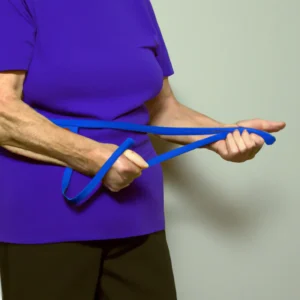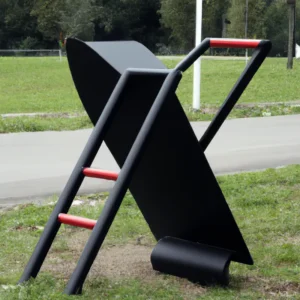Safeguard Your Game: Injury Prevention Tips
Volleyball and Injury Prevention: Common Injuries and How to Avoid Them
Volleyball is an exhilarating sport that combines speed, agility, and teamwork. However, it carries a risk of injury. Players must understand common injuries and prevention methods. This blog discusses common volleyball injuries and effective strategies to avoid them.
Common Volleyball Injuries
Players often face specific injuries in volleyball due to unique movements. Here are some common injuries:
Sprained Ankles
Players frequently sprain ankles in volleyball. They land awkwardly after jumps or collide with teammates. This can stretch or tear ankle ligaments. Symptoms include pain, swelling, and difficulty walking.
Shoulder Injuries
Shoulder injuries, like rotator cuff strains, also occur. Players often spike and serve, which can lead to overuse. Common signs include pain, weakness, and limited range of motion.
Knee Injuries
Knee injuries, such as patellar tendinitis, often affect volleyball players. Jumping and sudden direction changes stress the knees. Symptoms include pain around the kneecap and swelling.
Finger Injuries
Finger injuries can occur during passes or blocks. Players may experience sprains or fractures. Symptoms often consist of pain, swelling, and difficulty moving the finger.
Tips for Injury Prevention
Players must prevent injuries for a long and enjoyable experience. Here are effective tips to minimize injury risk:
Warm-Up and Stretch
Always start with a proper warm-up to increase blood flow. Dynamic stretching prepares your body for the game. Focus on leg, shoulder, and back stretches. This improves flexibility and reduces injury risks.
Strength Training
Incorporate strength training into your routine. Strong muscles support joints and improve stability. Focus on your core, legs, and shoulders. Stronger muscles absorb shock better during jumps and landings.
Proper Footwear
Wearing appropriate shoes is essential. Volleyball shoes provide support and grip on the court. They reduce the risk of ankle sprains. Ensure your shoes fit well and offer adequate cushioning.
Learn Proper Techniques
Practice proper techniques for jumping, landing, and spiking. This reduces stress on joints and muscles. Coaches can provide valuable feedback. Pay attention to your form and adjust as needed.
Advice for Players
Players should consider specific advice tailored to their needs. Here are strategies to enhance safety on the court:
Listen to Your Body
If you feel pain, don’t ignore it. Listen to your body and take breaks. Pushing through pain can lead to severe injuries. Rest and recover when necessary to avoid long-term damage.
Cross-Training
Engage in cross-training to enhance overall fitness. Activities like swimming, running, or cycling improve cardiovascular health. This maintains fitness while reducing the risk of overuse injuries.
Stay Hydrated
Hydration plays a significant role in injury prevention. Dehydration can cause muscle cramps and fatigue. Drink water before, during, and after games. Proper hydration keeps muscles functioning optimally.
Benefits of Injury Prevention
Prioritizing injury prevention offers numerous benefits. Here are key advantages:
Enhanced Performance
Preventing injuries allows you to perform at your best. Staying healthy enables consistent practice and competition. This leads to improved skills and better team performance.
Longer Playing Career
Injury prevention extends your playing career. Reducing injury risk lets you enjoy the sport longer. A long career fosters personal growth and achievement in volleyball.
Improved Overall Health
Staying injury-free contributes to overall health. Regular exercise, like volleyball, promotes physical fitness and mental well-being. Engaging in the sport reduces stress and fosters social connections.
Conclusion
Injuries commonly concern volleyball players. However, awareness and proactive measures minimize risk. Warm-ups, strength training, proper footwear, and technique are essential for prevention. Listening to your body and staying hydrated also plays a crucial role. By prioritizing injury prevention, you enhance performance, enjoy a longer playing career, and improve overall health. Embrace these strategies and keep playing safely!
Below are related products based on this post:
FAQ
What are some common injuries in volleyball?
Common injuries in volleyball include sprained ankles, shoulder injuries, knee injuries, and finger injuries. These injuries often result from unique movements in the sport, such as landing awkwardly after jumps or overuse from repetitive actions like spiking and serving.
How can I prevent injuries while playing volleyball?
To prevent injuries, it’s essential to start with a proper warm-up and dynamic stretching, incorporate strength training to support muscles and joints, wear appropriate footwear that provides support and grip, and practice proper techniques for jumping and landing. Listening to your body and taking breaks when necessary is also crucial.
What are the benefits of prioritizing injury prevention in volleyball?
Prioritizing injury prevention enhances performance, allows for a longer playing career, and contributes to improved overall health. Staying injury-free enables consistent practice and competition, promotes physical fitness, and fosters social connections through the sport.















Post Comment